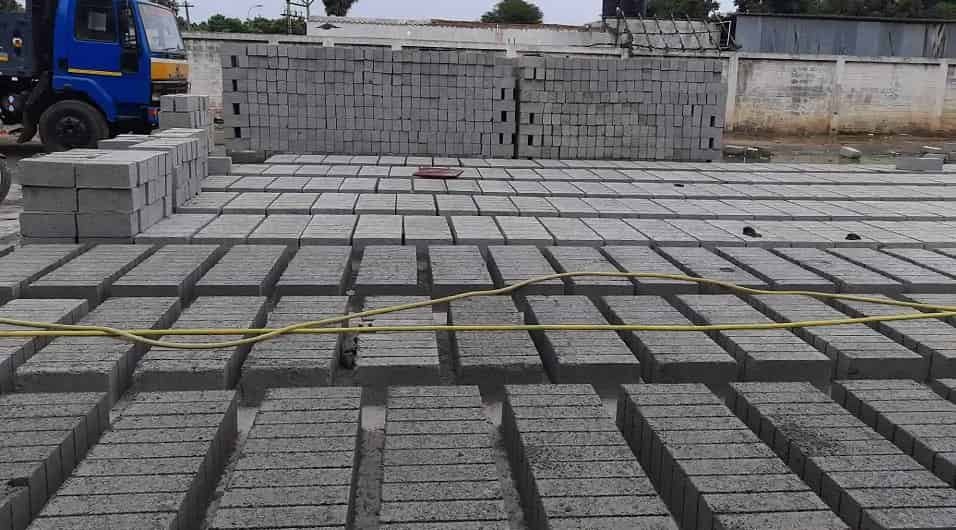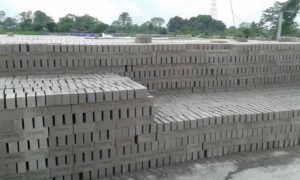Table of Contents
Concrete blocks form the foundation of many modern structures, boasting robustness and thermal efficiency. However, external factors can sometimes jeopardize their longevity and resistance. Thankfully, a range of curing concrete blocks methods promises to tackle these challenges head-on.

Curing Concrete Blocks: Methods
The concept of curing is not just a mere procedure; it’s an art and a science combined. At its core, curing focuses on maintaining the ideal moisture and temperature equilibrium as the block transitions from its malleable state to a hardened one. The primary goal of this pivotal step is to optimize the concrete block’s inherent strength and longevity. Delving into the world of curing, several techniques stand out, each with its unique advantages.
1. Wet Curing: Hydration is Key
Wet curing is the epitome of traditional curing techniques and is widely embraced by builders globally. By maintaining a consistent hydration level, achieved by soaking the block’s surface for a span of 7 to 14 days, the integrity of the concrete remains uncompromising. While this method fortifies the block, minimizing potential cracks and enhancing overall strength, it’s crucial to shield the blocks from abrupt drying, making it a bit resource-intensive due to the water usage.
2. Membrane Curing: The Moisture Shield
For projects situated in regions marked by low humidity or extreme temperature fluctuations, membrane curing becomes the method of choice. By encasing the concrete surface with specially designed plastic sheets or membranes, moisture evaporation is reduced to a minimum. Not only does this method conserve water, but it’s especially beneficial for precast concrete blocks, ensuring a pristine and blemish-free finish.
3. Steam Curing: Fast-Track Solidification
Steam curing is a nod to modern-day advancements in the construction sector. It entails the application of steam under controlled temperatures, drastically reducing the curing time to anywhere between 2 to 24 hours. The allure of steam curing lies in its dual promise — accelerated hardening combined with an upsurge in the block’s durability and strength. Yet, it’s essential to tread with caution, using precise machinery and maintaining consistent monitoring to avert any inadvertent block damage.
4. Chemical Curing: The Chemical Boost
In locales characterized by their chilling cold or arid conditions where traditional wet curing isn’t feasible, chemical curing emerges as a game-changer. By integrating specific, scientifically curated chemicals into the base concrete mix, the curing process undergoes a transformation, becoming faster and more efficient. This innovative approach undeniably amplifies concrete durability, but it comes with the caveat of being cost-intensive and necessitating unique equipment.
5. Accelerated Curing: Meeting Tight Deadlines
In the fast-paced world of construction, time is often of the essence. For such high-demand scenarios, accelerated curing becomes indispensable. This technique subjects the concrete to extreme conditions, either through high-heat or intense steam pressure, reducing the curing window considerably. However, the swift process brings along heightened risks of cracks, making vigilant monitoring a must.
Beyond Curing: Enhancing Concrete Block Performance
While the above curing methods reign supreme, other techniques further refine the concrete block’s durability and strength:
- Achieving the Perfect Mix: The foundational concrete mix, comprising cement, water, aggregates, and specialized additives, holds the key to the block’s performance. A well-balanced concoction can revolutionize concrete functionality, ensuring it remains resistant to cracks.
- The Strength of Reinforcement: The inclusion of materials like steel bars or mesh into concrete blocks exponentially elevates their structural integrity. This reinforcement becomes especially vital when crafting walls or load-bearing structures.
- Precision in Placement: The precise positioning of concrete blocks, ensuring they are evenly spaced on a perfectly level surface, is paramount for their peak performance.
- Moisture Management: Regulating and managing moisture levels within concrete blocks plays a crucial role in their overall health. Efficient drainage systems combined with adequate ventilation mechanisms curtail moisture accumulation, thereby enhancing block longevity.
In Conclusion
The intricate domain of concrete block curing is vast, with a plethora of techniques ranging from wet and membrane to steam, chemical, and accelerated curing. When combined with other complementary strategies such as precise mix design, meticulous reinforcement, strategic placement, and rigorous moisture management, these curing methods pave the way for concrete blocks that are robust, durable, and resilient against external adversities. Through a blend of traditional wisdom and modern techniques, the construction industry can craft edifices that stand tall, both metaphorically and literally.
For those in the construction industry looking to produce high-quality blocks efficiently, investing in the right machinery can make all the difference. A Concrete Block Making Machine is instrumental in creating consistent and durable blocks. With cutting-edge technology, this machine ensures that each block is crafted to perfection, ready to undergo the crucial curing process for optimal strength and durability.
For a deeper dive into the intricacies of solid concrete blocks and their foundational significance in construction projects, read more here.



